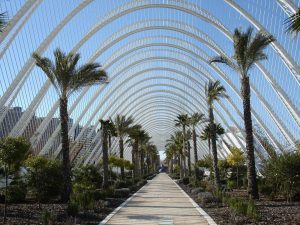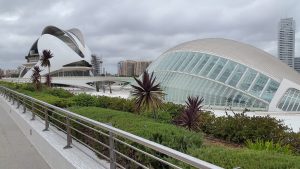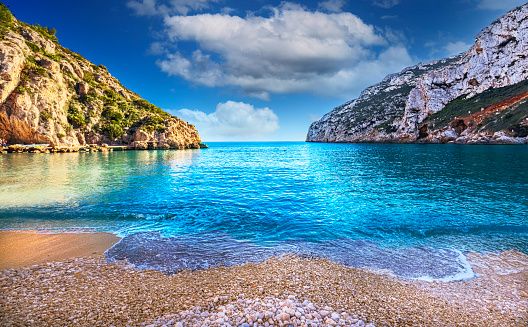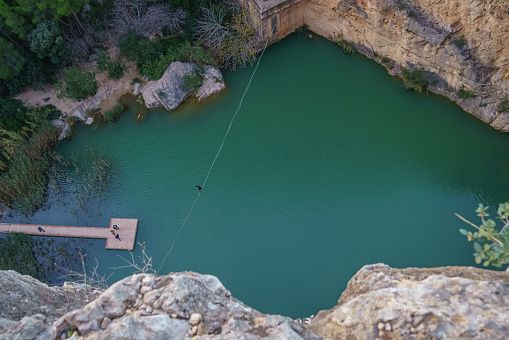
Oceanogràfic Valencia: What to see in a day
Did you know that Valencia is the third most inhabited city in Spain? This destination is ideal to be visited at any time of the year thanks to its mild Mediterranean climate with an average of 17 degrees Celsius. In our last post What to do in Valencia on the weekend we suggested some cool things to do in the city, but we didn’t mention anything about the Oceanogràfic, an almost mandatory and unmissable stop during your stay in the capital of the Valencian Community.
If you are thinking about places to see in Valencia, be sure to visit the Oceanogràfic, a gem for sea lovers that is located within the City of Arts and Sciences of Valencia. In this post we tell you everything you need to know to make the most of your visit and organize yourself in the best possible way.
Normally, to get a ticket to this enclosure, one of the most visited of the City of Arts and Sciences, you will have to get up early and stand in long queues. That’s why in Stay Líbere we give you the possibility to save time and effort by getting in advance through your reservation a ticket to the three enclosures of the City of Arts and Sciences: The Science Museum, the Hemisfèric and the Oceanogràfic.
How to organize a visit to the Oceanogràfic?
As we mentioned before, if you take the ticket directly with us, you will have access to the three enclosures of the City of Arts and Sciences. Our recommendation is not to try to see everything on the same day, but to divide your visit in 2 or 3 days. For the first day we suggest you visit the Science Museum. It is not an ordinary museum as you can imagine. From the outside, the architecture is magical and imposing and once inside you can enjoy its different panoramic views during your tour. This building has three floors and offers visitors an immersive experience with its multiple exhibitions. The second day is reserved for a visit to the Oceanogràfic, the largest aquarium in Europe where you can see more than 500 species, and on the third day go to the Hemisfèric to enjoy one of its 3D documentary screenings, which last approximately 50 minutes.
How long does it take to see the Oceanogràfic?
To see the Oceanogràfic of Valencia you will need about 4 or 5 hours which is the estimated time that the visit lasts, but there is no time limit to leave, so if you want you can spend the day there. However, we recommend that you look at the opening and closing times of the enclosure so you can better organize your time because although the Oceanogràfic is open 365 days a year, its schedule varies depending on the months and national holidays.
Opening hours by month:
January to March: from 10.00h to 18.00h except Saturdays which is from 10.00h to 22.00h.
April: from 10:00 a.m. to 8:00 p.m. except on Easter Week, when it is from 10:00 a.m. to 10:00 p.m. or midnight (Holy Friday and Saturday).
From June to August: from June 20th the opening hours are from 10.00h to 22.00h. and in August from the 8th the Oceanogràfic is open from 10.00h to 24.00h.
From September to December: except for the opening hours for the first weeks of September (from 10.00h to 22.00h), the visiting hours for the following months are from 10.00h to 20.00h.
What can you see in the Oceanogràfic of Valencia?
When you are inside you will see that the complex is divided by zones according to species and marine ecosystems. The first area you will find is the Access building located at the entrance of the complex. There you will see the hammerhead shark aquarium and several tanks with different species of jellyfish such as the so-called ‘fried egg’. Next is the Mediterranean area, a facility consisting of a total of nine aquariums where you can see about 7,400 species that make up the biological richness of the Mediterranean Sea. You can also enjoy the wetlands and the aviary located in an imposing sphere that reaches 26 meters high; the ‘Temperate and Tropical’ area with aquariums connected to each other by the longest underwater tunnel in Europe; the ‘Oceans’ installation where the largest aquarium of the Oceanogràfic of Valencia is located; the ‘Arctic and Antarctic’ area with the largest aquarium of the Oceanogràfic of Valencia; the ‘Arctic and Antarctic’ areas where you can see penguins, walruses and beluga whales; the ‘Islands’ area, an open-air installation that looks after the care and recovery of Patagonian sea lions; and the ‘Red Sea’ underwater auditorium.
But the most outstanding area of the Oceanogràfic and the one that attracts the most visitors is undoubtedly the ‘Dolphinarium’, one of the largest in the world. It has five pools that house about 30 dolphins, one general pool and 4 auxiliary pools for specific purposes such as reproduction, training or medical care that these animals need. You cannot leave without seeing the bio-educational exhibits of the bottlenose dolphins.

How to get there and where to park at the Oceanogràfic of Valencia
There are different options to get to the Oceanogràfic of Valencia. The first way we recommend if you like to do sport and want to contribute to reduce C02 emissions is by bicycle. The city of Valencia has a wide network of bike lanes throughout the city. If you like this option, you can rent them at any of the stations you will find around the city. Another means of transport that we suggest is the Metrovalencia. If you decide to use this transport, you will have to get off at the Alameda station which is the closest to the Oceanogràfic. You can also arrive by car, but this involves using a parking lot to park it. We recommend you use the Umbracle parking lot, which is open every day from 8.00h – 24.00h. The rate is 2.30 euros per hour and 24 euros maximum per day, but you can access the parking promotion by presenting your ticket to the City of Arts and Sciences at the ticket offices of the Science Museum or the Hemisfèric and reduce the rate to 7 euros per day. 


